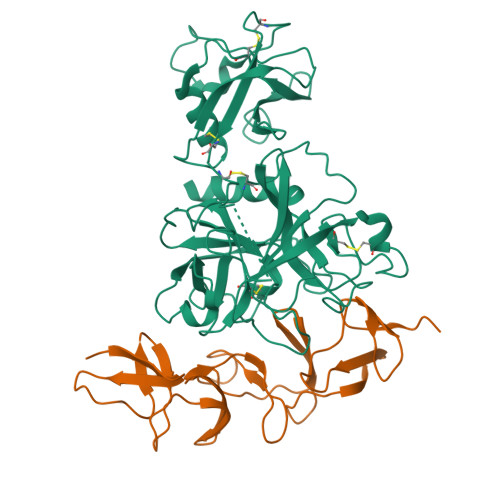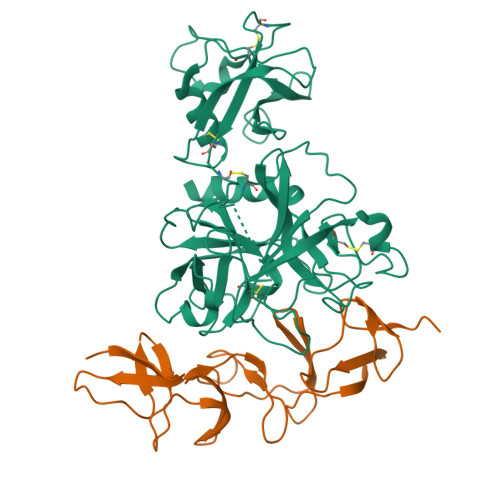Molecular basis of TMPRSS2 recognition by Paeniclostridium sordellii hemorrhagic toxin.
Zhou, R., He, L., Zhang, J., Zhang, X., Li, Y., Zhan, X., Tao, L.(2024) Nat Commun 15: 1976-1976
- PubMed: 38438396
- DOI: https://doi.org/10.1038/s41467-024-46394-6
- Primary Citation of Related Structures:
8JHZ, 8JI0 - PubMed Abstract:
Hemorrhagic toxin (TcsH) is a major virulence factor produced by Paeniclostridium sordellii, which is a non-negligible threat to women undergoing childbirth or abortions. Recently, Transmembrane Serine Protease 2 (TMPRSS2) was identified as a host receptor of TcsH. Here, we show the cryo-EM structures of the TcsH-TMPRSS2 complex and uncover that TcsH binds to the serine protease domain (SPD) of TMPRSS2 through the CROP unit-VI. This receptor binding mode is unique among LCTs. Five top surface loops of TMPRSS2 SPD , which also determine the protease substrate specificity, constitute the structural determinants recognized by TcsH. The binding of TcsH inhibits the proteolytic activity of TMPRSS2, whereas its implication in disease manifestations remains unclear. We further show that mutations selectively disrupting TMPRSS2-binding reduce TcsH toxicity in the intestinal epithelium of the female mice. These findings together shed light on the distinct molecular basis of TcsH-TMPRSS2 interactions, which expands our knowledge of host recognition mechanisms employed by LCTs and provides novel targets for developing therapeutics against P. sordellii infections.
Organizational Affiliation:
College of Life Sciences, Fudan University, Shanghai, 200433, China.

















